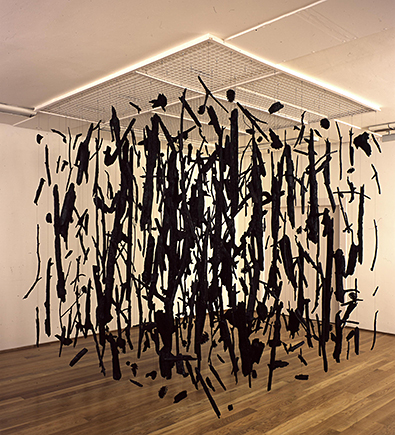“Earth: Art of a Changing World”, at the Royal Academy, hovers somewhere between a display of contemporary art and a list of New Year’s resolutions, or perhaps that should be commandments. Thou shalt not pollute. Thou shalt recycle. Thou shalt reduce thy carbon footprint. Or else.
The show’s mission statement appears on page one of its pocket-sized, eco-friendly catalogue (printed, of course, on recycled paper): “In this exhibition the Royal Academy sets out to explore the challenges posed by climate change by bringing together works of art by 35 leading contemporary artists from around the world. Many have addressed climate change directly; others have allowed the subject to find a resonance within their work”. As a rule, the less preachy the art, the more effective it turns out to be.
The show’s mission statement appears on page one of its pocket-sized, eco-friendly catalogue (printed, of course, on recycled paper): “In this exhibition the Royal Academy sets out to explore the challenges posed by climate change by bringing together works of art by 35 leading contemporary artists from around the world. Many have addressed climate change directly; others have allowed the subject to find a resonance within their work”. As a rule, the less preachy the art, the more effective it turns out to be.
The exhibition announces itself bullishly, even to those who may have no intention of visiting it, with Marcos Lutyens and Alessandro Marianantoni’s horrendously titled CO2 morrow – a circular carbuncle affixed above the exterior balcony on the Burlington Garden side of the galleries. Made from carbon fibre and using LED technology, it has been designed to change colour in response to shifting carbon dioxide readings in the ambient atmosphere. The result is a strident, multi-coloured eyesore, but perhaps that is the point. Inside the building, Spencer Finch’s contribution looms large over the staircase leading up to the galleries proper. A hovering amorphous mass of blue, made from what looks like a vast mound of discarded cellophane Christmas wrapping, has been suspended from the ceiling. It is perhaps intended to evoke the frailties of the earth’s atmosphere, like a hole in the ozone layer brought down to earth.
Upstairs, the eco-messages and meditations multiply. Mona Hatoum’s Hot Spot is a wire mesh globe with the different continents picked out...


